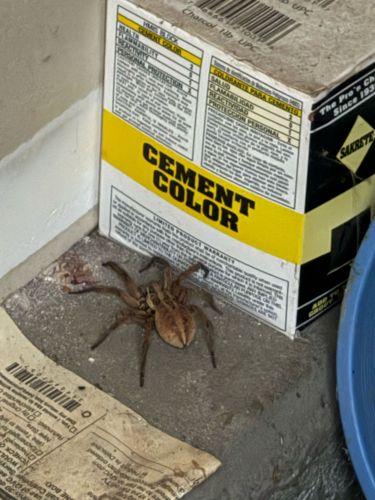Wolf Spider
Scientific Name: Various species within the family Lycosidae (e.g., Hogna, Rabidosa)
Order & Family: Order: Araneae, Family: Lycosidae
Size: Body length typically ranges from 10 to 35 mm (0.4 to 1.4 inches), with leg spans considerably larger depending on the species.

Natural Habitat
Wolf spiders are highly adaptable and can be found in a wide variety of habitats, including grasslands, forests, deserts, wetlands, and suburban gardens. They often live on the ground, under rocks, logs, or leaf litter, and some species may dig burrows.
Diet & Feeding
Mainly insects and other small invertebrates. They are generalist predators, feeding on crickets, grasshoppers, beetles, ants, and other spiders. Larger species may occasionally prey on small lizards or frogs.
Behavior Patterns
Wolf spiders are solitary hunters, typically nocturnal, but some species may hunt during the day. They do not build webs to catch prey but instead actively stalk and pounce on their victims. Females carry their egg sacs attached to their spinnerets and, after hatching, carry the spiderlings on their back for a period until they are old enough to disperse. They are known for their speed and agility.
Risks & Benefits
Risks: While wolf spiders are not typically aggressive, they can bite if provoked or cornered. Their venom is generally not dangerous to humans, causing only mild symptoms like localized pain, swelling, and redness, similar to a bee sting. Serious reactions are rare. Benefits: They are natural pest controllers, helping to keep populations of various insects in check, which can be beneficial in gardens and agricultural settings.
Identified on: 8/28/2025